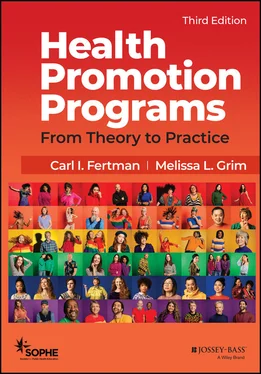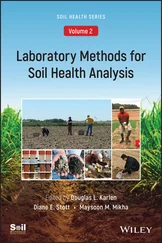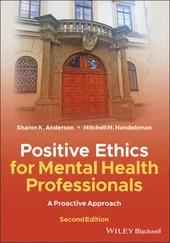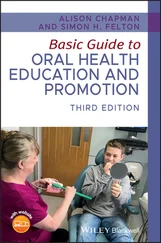(SOPHE) Society for Public Health Education - Health Promotion Programs
Здесь есть возможность читать онлайн «(SOPHE) Society for Public Health Education - Health Promotion Programs» — ознакомительный отрывок электронной книги совершенно бесплатно, а после прочтения отрывка купить полную версию. В некоторых случаях можно слушать аудио, скачать через торрент в формате fb2 и присутствует краткое содержание. Жанр: unrecognised, на английском языке. Описание произведения, (предисловие) а так же отзывы посетителей доступны на портале библиотеки ЛибКат.
- Название:Health Promotion Programs
- Автор:
- Жанр:
- Год:неизвестен
- ISBN:нет данных
- Рейтинг книги:5 / 5. Голосов: 1
-
Избранное:Добавить в избранное
- Отзывы:
-
Ваша оценка:
- 100
- 1
- 2
- 3
- 4
- 5
Health Promotion Programs: краткое содержание, описание и аннотация
Предлагаем к чтению аннотацию, описание, краткое содержание или предисловие (зависит от того, что написал сам автор книги «Health Promotion Programs»). Если вы не нашли необходимую информацию о книге — напишите в комментариях, мы постараемся отыскать её.
Health Promotion Programs: From Theory to Practice
Health Promotion Programs: From Theory to Practice
Health Promotion Programs — читать онлайн ознакомительный отрывок
Ниже представлен текст книги, разбитый по страницам. Система сохранения места последней прочитанной страницы, позволяет с удобством читать онлайн бесплатно книгу «Health Promotion Programs», без необходимости каждый раз заново искать на чём Вы остановились. Поставьте закладку, и сможете в любой момент перейти на страницу, на которой закончили чтение.
Интервал:
Закладка:
Opportunities to be healthy depend on the living and working conditions and other resources that enable people to be as healthy as possible. A population’s opportunities to be healthy are measured by assessing the determinants of health (i.e. income or wealth, education, neighborhood characteristics) that people experience across their lives. Individual responsibility is important, but too many people lack access to the conditions and resources that are needed to be healthier and to have healthy choices. A fair and just society means that everyone has the opportunity to be as healthy as possible. Being as healthy as possible refers to the highest level of health that reasonably could be within an individual’s reach if society makes adequate efforts to provide opportunities.
A health promotion program working to achieve health equity and social justice for the individuals and communities they service requires action. Required is improving access to the conditions and resources that strongly influence health—including good jobs with fair pay, high-quality education, safe housing, good physical and social environments, and high-quality healthcare—for those who lack access and have worse health. While this ultimately improves health and well-being for everyone, the focus of action for equity and social justice is with those groups who have been excluded or marginalized. Program move from providing equality in services and care to equity in services and care and then to social justice (Figure 2.1).
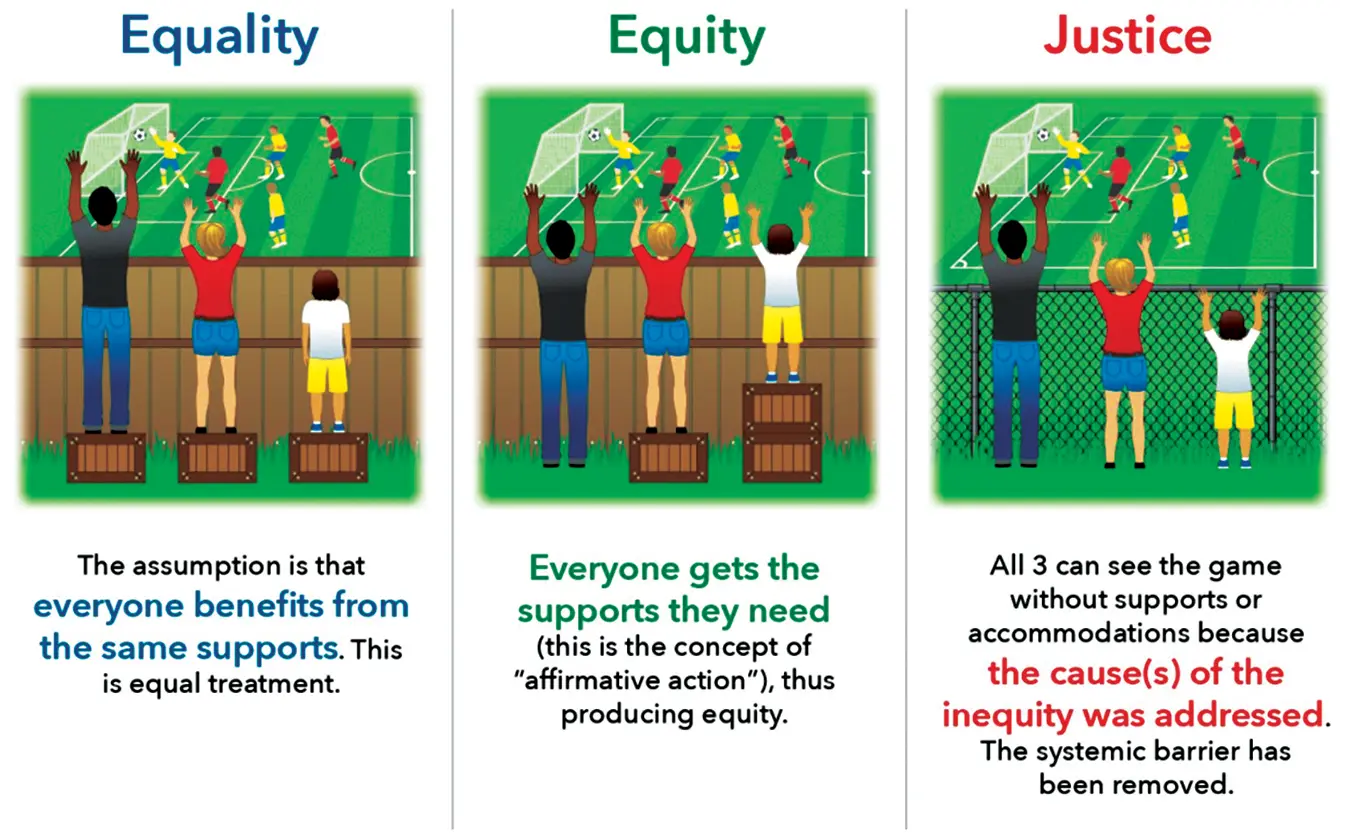
Figure 2.1 Equality, Equity, Justice
Health equity can be viewed both as a process (the process of reducing disparities in health and its determinants) and as an outcome (the ultimate goal: the elimination of social disparities in health and its determinants). Progress toward health equity is assessed by measuring how these disparities change over time, in absolute and relative terms. The gaps are closed by making special efforts to improve the health of excluded or marginalized groups, not by worsening the health of those who are better off. Key insights in addressing health equity focus on health, which is more than healthcare. Consider these five key insights (Braveman et al., 2017):
Health inequities are neither natural nor inevitable.
Your ZIP code may be more important than your genetic code for health.
The choices we make are shaped by the choices we have.
Structural racism acts as a force in the distribution of opportunities for health.
All policy is health policy.
Health equity and social justice are values that imply a pledge to eliminate health inequities and its causes, most of which are rooted in the structural determinants of health. From this perspective, the pursue of health equity and social justice are associated with ethics and human rights. Achieving health equity and social justice occur when all individuals and groups have the opportunity to attain their full health potential regardless of their social position or other socially determined circumstance (Arcaya et al., 2015).
Health Status and Healthcare Vary
Health statusand healthcare vary among individuals and groups of people within the same community. Differences in health status among groups within a community are most often related to economic status , race and ethnicity , gender , education , disability , geographic location , or sexual orientation. Although genes, behavior, and medical care play a role in how well we feel and how long we live, the social conditions in which we are born, live, and work have the most significant impact on health and longevity. Similarly, the way we organize our communities, the “social structure,” affects how we feel about ourselves and the role we play in the society. These social conditions that impact an individual’s health status are known collectively as the social determinants of health , and they include the human and social capital as well as opportunities for equality in individual development and participation in community life.
Poverty
Living in poverty is a main factor associated with poorer health status as well as lack of access to healthcare. Poverty thresholds are determined by the U.S. government, and vary according to the size of a family and the ages of its members. In 2021, the poverty threshold, or poverty line, for one individual was $12,784; for a family of four it was $25,701. In 2021, 38.1 million people lived in poverty in the United States. This is almost 12 percent of the total population. Poverty disproportionally affects women, single-parent families, and people living with a disability. In 2021, 11.9 million children (1 in every 6 children) and more than 14 percent of seniors lived in poverty. Regarding race/ethnicity (Figure 2.2), Native Americans had the highest poverty rate (25.4 percent), followed by Blacks (20.8 percent) and Hispanics (of any race) (17.6 percent). Whites and Asians had a poverty rate of 10.1 percent (Poverty USA, 2021).

Figure 2.2 Poverty by Race/Ethnicity
Source : PovertyUSA.org, 2020. Poverty Facts. The Population of Poverty USA. PovertyUSA.org. © 2019 United States Conference of Catholic Bishops, Washington, D.C.
Poverty has significant implications on whether people are able to meet basic needs, like food and housing. For example, the Department of Agriculture estimated that 11 percent of U.S. households were food insecure in 2018 (Figure 2.3). This means that approximately 14.3 million households had difficulty providing enough food for all their members due to a lack of resources. More than 35 percent of households with incomes below the Federal poverty line were food insecure (Mentzer Morrison, 2020).
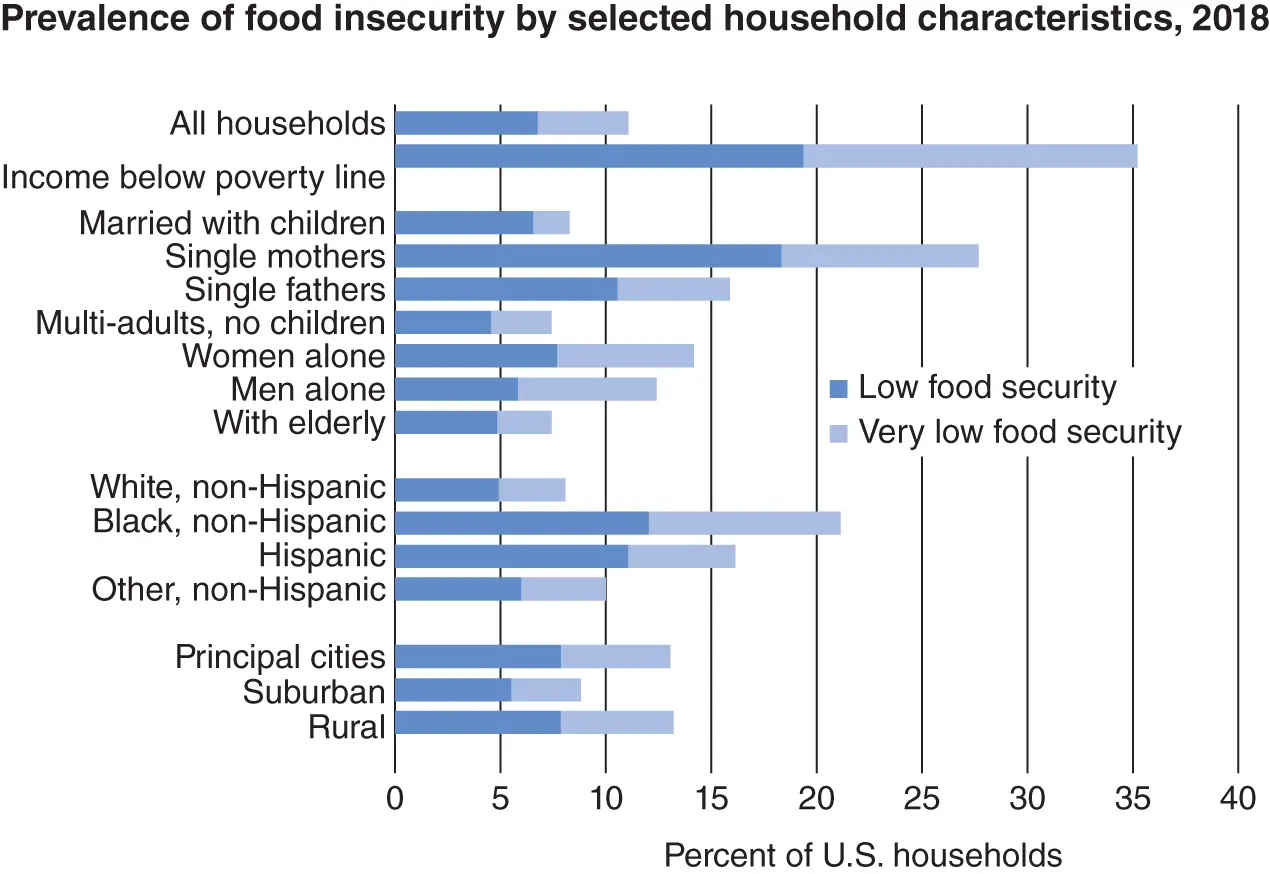
Figure 2.3 Food Insecurity Note : Food-insecure households include those with low food security and very low food security.
Sources : USDA; Economic Research Service using data from the 2018 Current Population Survey Food Security supplement; U.S .Census Bureau.
Housing is key to reducing intergenerational poverty and increasing economic mobility. Even in the United States, increasing access to affordable housing is the most cost-effective strategy for reducing childhood poverty and increasing economic mobility. However, 75 percent of all extremely low-income families spend more than half their income on rent. Similarly, losing housing has a ripple effect on obtaining basic necessities such as food and medicines, leads to depression and child abuse, and compromises education (Cunningham, 2016). Despite this, over half a million Americans go homeless on a single night in the United States (The Council of Economic Advisors, 2019).
Race, Ethnicity, and Healthcare
Since 2003, the Agency for Healthcare Research and Quality (AHRQ) has produced an annual report entitled the National Healthcare Disparities Report (NHDR), which examines disparities in healthcare received by racial and ethnic minorities, low-income populations, and people with special healthcare needs. These reports measure trends in effectiveness of care, patient safety, timeliness of care, and efficiency of care, tracking more than 200 healthcare process, outcome, and access measures, and covering a wide variety of conditions and settings. Disparities in quality of care are common among Blacks and Hispanics, who received worse care than Whites for about 40 percent of quality of care measures, while American Indians/Alaska Natives received worse care than Whites for one-third of quality measures. African Americans and American Indians/Alaska Natives also experience worse access to care than Whites for about 40 percent of access measures, while Hispanics had worse access to care than Whites for about 60 percent of measures (Figure 2.4).
Читать дальшеИнтервал:
Закладка:
Похожие книги на «Health Promotion Programs»
Представляем Вашему вниманию похожие книги на «Health Promotion Programs» списком для выбора. Мы отобрали схожую по названию и смыслу литературу в надежде предоставить читателям больше вариантов отыскать новые, интересные, ещё непрочитанные произведения.
Обсуждение, отзывы о книге «Health Promotion Programs» и просто собственные мнения читателей. Оставьте ваши комментарии, напишите, что Вы думаете о произведении, его смысле или главных героях. Укажите что конкретно понравилось, а что нет, и почему Вы так считаете.
